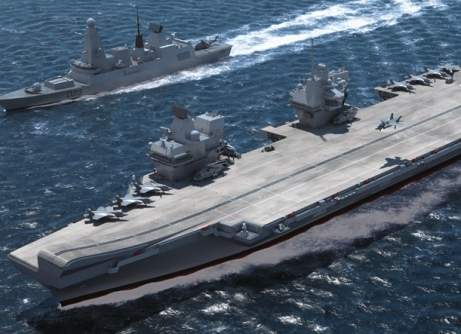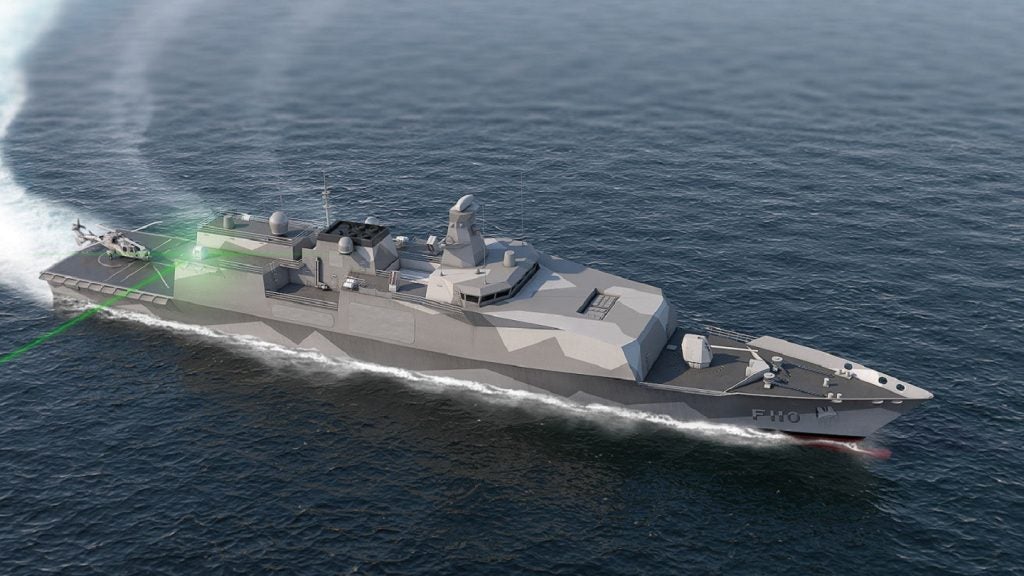

David Atkinson, F-35/carrier integration lead at BAE Systems explained how the company’s multi-million pound dedicated simulation facility at BAE Systems’ site at Warton in Lancashire has been playing a critical role ensuring the smooth integration of the F-35B aircraft with the QEC Carriers.
To optimise the interaction between the aircraft and the ship, BAE Systems uses the simulator to try out the positioning of lights, lines, cameras and information systems to enable the jet to perform the best it can.
The company’s F-35 simulator facility at Warton has the same capabilities as the Lockheed Martin simulator at Dallas Fort Worth as part of the integration contract, but for the Ministry of Defence (MOD) it has integrated the ship model into the simulator.
"We’ve taken all the hydrodynamic data from the Aircraft Carrier Alliance (ACA) to ensure the motion of the ship is simulated correctly, and we’ve been able to trial them the latest design information of any options that have been running in the ACA in conjunction to being able to fly this aircraft as close to reality as possible," says Atkinson.
Visual landing aids
Each trial phase has involved six to eight test pilots, including team JSF integrated test pilots from Axe River, Fort Worth, to ensure the decisions that have been made can offer the capability they need form the ship when it goes into service.
How well do you really know your competitors?
Access the most comprehensive Company Profiles on the market, powered by GlobalData. Save hours of research. Gain competitive edge.

Thank you!
Your download email will arrive shortly
Not ready to buy yet? Download a free sample
We are confident about the unique quality of our Company Profiles. However, we want you to make the most beneficial decision for your business, so we offer a free sample that you can download by submitting the below form
By GlobalData"Since around 2003, we’ve been working on the visual landing aids on the flight deck, firstly the colour of the lights to catch the pilot’s attention, how far apart, what the pilot sees out of the cockpit and side, hover height, cues the pilots would pick up on to position himself in the right place to conduct recover and launch from the ship," says Atkinson.
The naming of HMS Queen Elizabeth was a chance to show off the Royal Navy’s newest flagship vessel and celebrate the achievements of thousands of British workers.
The ship motion can go from nothing right up to the maximum requirement for the ship – sea state 6 – enabling the BAE Systems team to push the limits through the whole programme to ensure that genuinely we will be able to operate the aircraft can be operated up to the requirement that the MOD has for the ship.
"As well as the pilot’s point of view, we’ve extended the simulator to show what the guys in Flyco – flight control – see the situation and aircraft when it’s hovering alongside the ship," says Atkinson.
The team has also been exploring option like deck floodlighting for maintenance activities. While the UK prefers using aircraft carriers in the dark, that is not universal among other navies, so this adds flexibility to interoperability. Having different lighting schemes that do not necessarily focus on the Royal Navy’s needs enables operators from other navies whose pilots are used to different ways of illuminating flight decks.
ACA and team JSF support have together developed a fully-integrated set of visual landing aids for the QE class of aircraft carriers which will be installed on QE at Rosyth dockyard.
"From the earliest days lots of attention has been paid to the human-machine interface," says Atkinson. "From an F-35 point of view we’re interested in the interaction between that organisation and our pilot. Our focus has been on the position of the landing signal officer (LSO) who is a fully-qualified F-35 pilot with additional training to be the subject matter expert in every F-35 and its operation."

LSO integration
To this end, BAE Systems is integrating its Warton simulator with a new LSO simulation facility that is part of the same virtual world so the LSO can sit at his workstation and interact in real time with a pilot flying the F-35 simulator.
"Scenarios can be presented to really stretch the limits of the interaction between the LSO and the pilots, including night, bad weather, the ship moving significantly or aspects of the aircraft or ship not quite working properly," says Atkinson. "We can explore that in a virtual environment and ensure we optimise that interface from day one."
For added realism, BAE Systems even rescued the LSO’s chair from HMS Prince Of Wales from the warehouse to give the LSO the best possible representation of the real interface with the QEC.
"When we developed that it was unique in the world. We found our friends at NAVAIR picked up on that and they’re now doing LSO-in-the-loop on their simulators as well," says Atkinson.
Developing new manoeuvres
The integrated simulation is now so comprehensive it can be used to develop new manoeuvres, including not just the ability of the aircraft to do the manoeuvre itself, but also the concept of operations, the visual landing aids needed on the ship, and what the LSO’s feed from Flyco.
"For the MOD we’re been developing this concept of ship-borne rolling landing to enhance the bring-back clearance for on the F-35B to the QEC flight deck," explains Atkinson. "The QEC flight deck is big enough to enable us to do a forward-rolling vertical landing to the flight-deck then stop using the aircraft’s own brakes, as of course there are no catapults and arrestor gear on the ship. We use the forward speed of the aircraft to generate some aerodynamic lift along with the STOVL propulsion performance."
Follow Berenice Baker on Google+


.gif)





